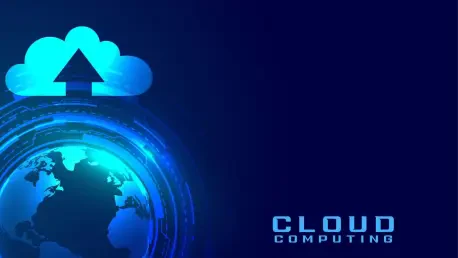In an era where technology evolves at an unparalleled pace, businesses face the formidable challenge of modernizing their IT infrastructures without toppling established operations. Many enterprises harbor the belief that modernization inexorably leads to disruptions, rendering businesses vulnerable to operational halts and ballooning costs. However, the arrival of hybrid clouds offers a promising solution, allowing firms to embrace innovation while keeping disruption at bay. This nuanced approach contradicts the old norm of abrupt overhauls and presents a phased integration of cutting-edge technologies within existing frameworks. Such strategies not only optimize infrastructure costs but also enhance IT systems’ flexibility and scalability, urging organizations to pursue innovation without fear of disturbances that impact key business activities.
Hybrid cloud solutions merge private and public cloud environments, creating a seamless and flexible infrastructure. This makes it especially appealing for brands striving to blend new technologies with legacy systems. Businesses can gradually integrate applications while simultaneously maintaining ongoing operations, thus minimizing interruptions. Within this hybrid setup, companies identify specific aspects of their IT environment for innovation without affecting mission-critical operations. For industries where stability and security hold paramount significance—such as healthcare, finance, and government services—the hybrid cloud offers a secure pathway to modernization. This sophisticated infrastructure addresses business demands while guaranteeing that operations continue to run smoothly, thus fostering innovation and stability concurrently.
Navigating Misconceptions about IT Modernization
A prevailing misconception about IT modernization is that it necessitates uprooting entire systems. Many perceive assimilation of new technologies into legacy frameworks to be problematic, fearing unmanageable costs and potential operational chaos. Often, set viewpoints lead firms to adopt a “rip-and-replace” approach, discarding established systems in favor of new, unproven technologies. This mentality fails to recognize the value of existing infrastructure and may escalate hidden expenses, such as training costs and the need for backup systems during transitions. Businesses, especially those dependent on mainframe data or operating in regulated industries, find such strategies fraught with instability and risk. Not only does unexpected downtime present significant financial repercussions, but worker productivity and customer satisfaction also suffer.
In contrast, a more deliberate, systematic modernization approach embraces the nuances of existing systems, harmonizing new technologies with established infrastructure. This methodical integration maintains the equilibrium between innovation and functionality, sparing firms undue expenditures and facilitating controlled pivots to novel solutions. Rather than abandoning proven assets, companies can extend their lifecycle, leveraging them as foundations for developing future capabilities. The strategic pathway increases value creation and reduces risk by allowing phased adoption and limiting organizational disruptions. Guiding this alignment are hybrid clouds, which offer businesses reliable mechanisms to adopt new capabilities without relinquishing the stability and familiarity of longstanding frameworks. By maintaining flexibility and security, hybrid clouds enable businesses to proceed with modernization in a balanced manner.
Strategic Enhancements through Incremental Developments
Combining existing systems with new hybrid cloud infrastructure equips companies with enhanced IT resilience. A strategic modernization roadmap views IT overhaul as an ongoing journey, adaptable to the specific needs and objectives of each organization. Businesses must assess their unique positions and align objectives with technological advances that maximize operational effectiveness. Acknowledging the potential of modernization demands foresight and a commitment to maintaining stability while introducing scalable and reliable updates. Hybrid clouds offer opportunities to incorporate technological expansion without abandoning foundational investments, creating a reliable pathway that minimizes disruption and promotes sustained growth.
Integrating hybrid cloud resources within existing frameworks allows organizations to overcome modernization barriers by delivering innovative solutions without forgoing operational consistency. Instead of approaching IT upgrades as insurmountable challenges, businesses recognize the merits of incremental developments—a process that considers the evolving technological landscape and navigates the complexities of regulatory requirements and legacy dependencies. Employing a resolution to modernize systematically challenges the belief that progress disturbs operations, cementing modernization’s role as an enhancer of service delivery and operational resilience. By leveraging hybrid cloud capabilities, companies set a balanced strategy that deftly guides their course through the evolving digital terrain, ensuring they meet both immediate and long-term objectives without unwarranted interruption.
Future-Proof Innovation with Hybrid Cloud
Businesses increasingly recognize that modernization necessitates both legacy system retention and the swift assimilation of new solutions. Hybrid cloud infrastructures actively position enterprises to capitalize on progressive opportunities while securely maintaining critical operations. Each business journey is personalized, taking advantage of hybrid cloud versatility to fit specific and distinctive needs. Prioritizing an understanding of unique environments, organizations align modernization efforts to match operational demands and emerging technological trends. This strategic approach accommodates seamless integration while maintaining the core integrity of business processes, ensuring that transitions to contemporary solutions are smooth and unobtrusive.
Future innovation must consider the lessons of the past, especially regarding risks associated with total system overhaul. Instead of discarding established systems, firms utilizing hybrid cloud environments gain a competitive advantage while minimizing potential disruption. By continuously assessing and accommodating system capabilities and evolving needs within a hybrid framework, firms can foster progressive, sustained, and seamless development. Delivering organization-specific solutions that mesh established methods with cutting-edge systems enables forward-thinking modernization. This process protects stakeholder value, mitigates risk, and builds an effective operational strategy that serves across varying technological timelines. Embracing hybrid cloud solutions bolsters companies’ capability to remain at the forefront of innovation, adapting efficiently to pressing demands, and securing continuity in a dynamic environment.
Evolving Thoughtfully without Sacrificing Stability
In a time when technology advances rapidly, businesses are challenged to upgrade their IT systems without disrupting established operations. Many firms worry that modernization will cause interruptions, leading to increased costs and halted operations. However, hybrid clouds offer a promising solution, letting companies innovate while minimizing disruptions. This method replaces the old idea of sudden overhauls by introducing a step-by-step integration of modern technologies into existing systems. Such strategies optimize infrastructure costs and enhance flexibility and scalability, encouraging businesses to innovate without disrupting essential functions.
Hybrid clouds combine private and public cloud environments, creating a flexible, seamless infrastructure. This is particularly appealing to businesses eager to integrate new technologies with traditional systems. They can incrementally incorporate applications while maintaining ongoing activities, thus reducing disruptions. In a hybrid setup, companies can target specific areas of their IT for innovation without impacting vital operations. Industries prioritizing stability and security, like healthcare, finance, and government, find hybrid clouds a secure modernization path. This sophisticated setup meets business needs, fostering innovation and stability simultaneously.









